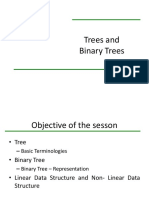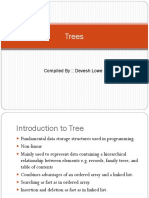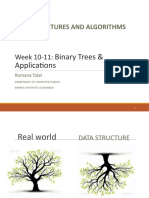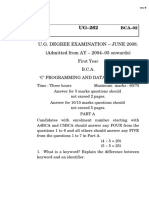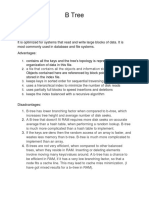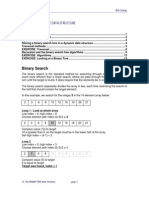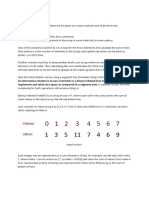0% found this document useful (0 votes)
62 views71 pagesTrees (Part 1)
The document discusses trees as non-linear data structures used to represent hierarchies, with a focus on their formal definitions, types, and traversal methods. It explains the characteristics of binary trees, including their structure, levels, and types of traversals such as preorder, inorder, and postorder. Additionally, it covers breadth-first traversal and provides examples of how to implement these traversals.
Uploaded by
shahwaizartsCopyright
© © All Rights Reserved
We take content rights seriously. If you suspect this is your content, claim it here.
Available Formats
Download as PDF, TXT or read online on Scribd
0% found this document useful (0 votes)
62 views71 pagesTrees (Part 1)
The document discusses trees as non-linear data structures used to represent hierarchies, with a focus on their formal definitions, types, and traversal methods. It explains the characteristics of binary trees, including their structure, levels, and types of traversals such as preorder, inorder, and postorder. Additionally, it covers breadth-first traversal and provides examples of how to implement these traversals.
Uploaded by
shahwaizartsCopyright
© © All Rights Reserved
We take content rights seriously. If you suspect this is your content, claim it here.
Available Formats
Download as PDF, TXT or read online on Scribd
/ 71

















